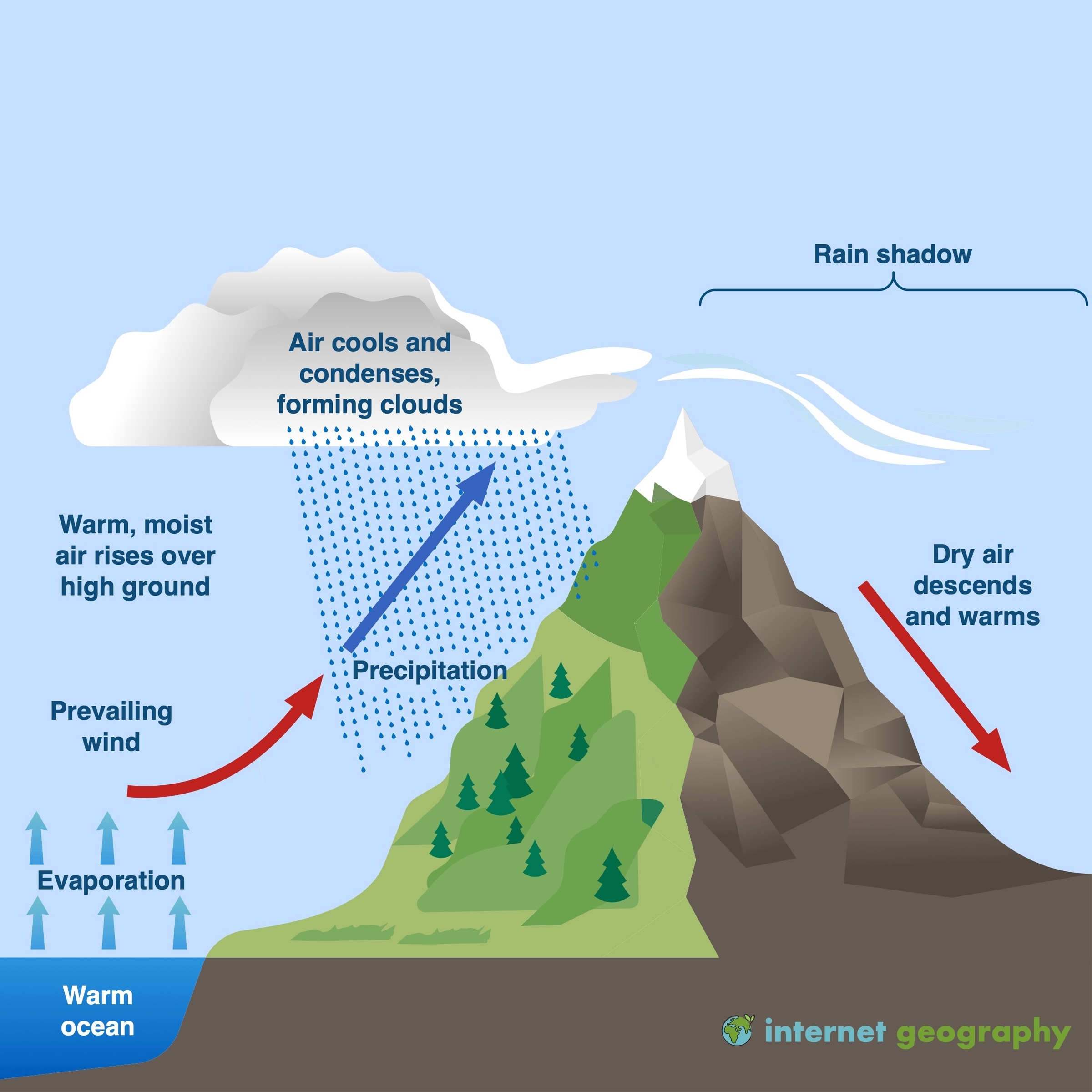
Relief rainfall, also known as orographic rainfall, is a type of precipitation that occurs when moist air is forced to rise over high land, such as hills or mountains. As the air rises, it cools and condenses, forming clouds and rain. The following is an essay of approximately 1000 words that explains the process and effects of relief rainfall in more detail.
Relief rainfall is one of the three main types of rainfall, along with frontal rainfall and convectional rainfall. Relief rainfall is common in areas where the land increases in height, such as the west coast of the United Kingdom, the western slopes of the Andes, and the Himalayas. These areas experience prevailing winds that carry moist air from the oceans or large bodies of water. When these winds encounter high land, they are forced to rise and cool, creating a zone of low pressure. As the air cools, it reaches its dew point, which is the temperature at which the air can no longer hold water vapour. The water vapour then condenses into tiny droplets, forming clouds. When the droplets become large enough, they fall as rain or snow, depending on the temperature.
The amount of rainfall depends on several factors, such as the height and slope of the land, the speed and direction of the wind, and the humidity and temperature of the air. Generally, the higher and steeper the land, the more rainfall there is, as the air rises faster and cools more. The windward side of the land, which faces the direction of the wind, receives more rainfall than the leeward side, which is sheltered from the wind. This creates a rain shadow effect, where the leeward side is much drier and warmer than the windward side. For example, in the UK, the west coast receives an average of 1600 mm of rainfall per year, while the east coast receives only 600 mm. Similarly, in South America, the Amazon rainforest on the windward side of the Andes receives abundant rainfall, while the Atacama desert on the leeward side is one of the driest places on Earth.
Relief rainfall has significant impacts on the environment and human activities. On the positive side, relief rainfall provides water for agriculture, hydroelectric power, and domestic use. It also supports the growth of vegetation and biodiversity, as well as the formation of rivers and lakes. On the negative side, relief
